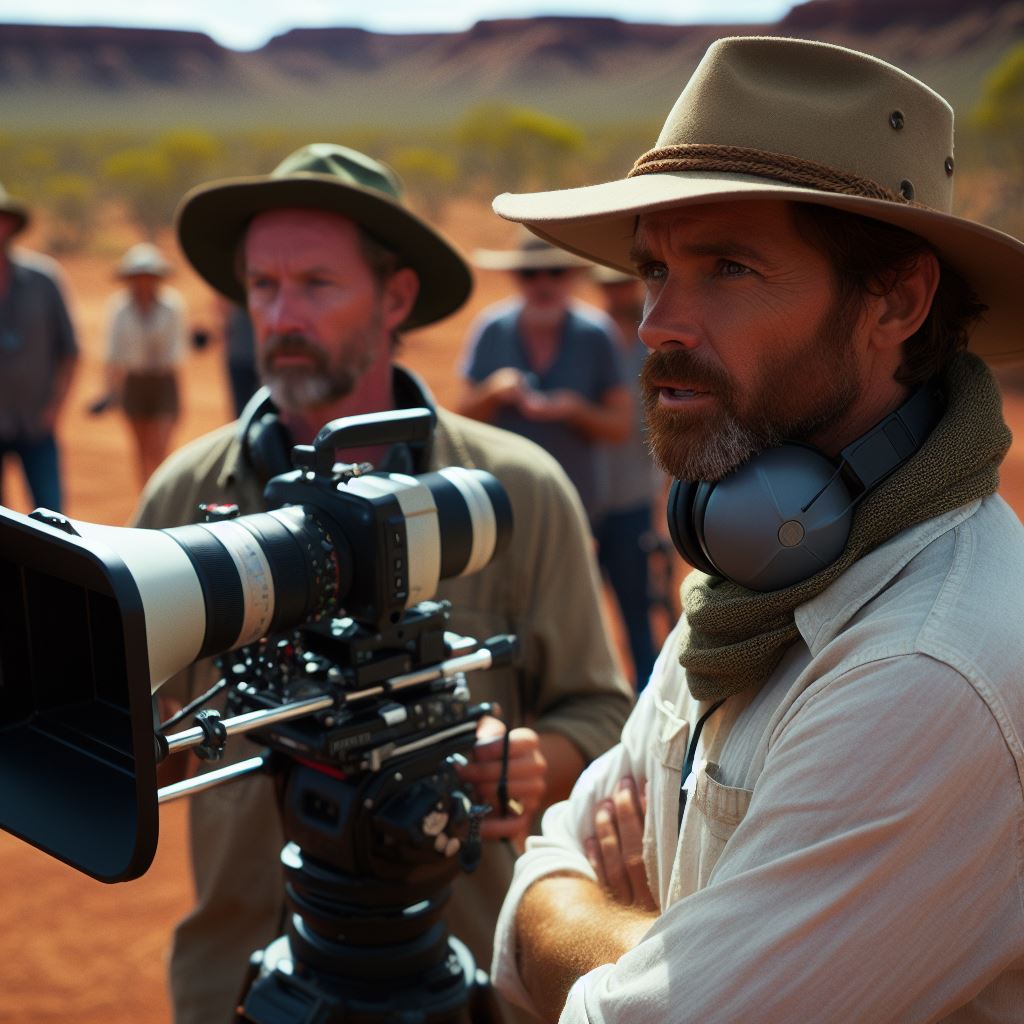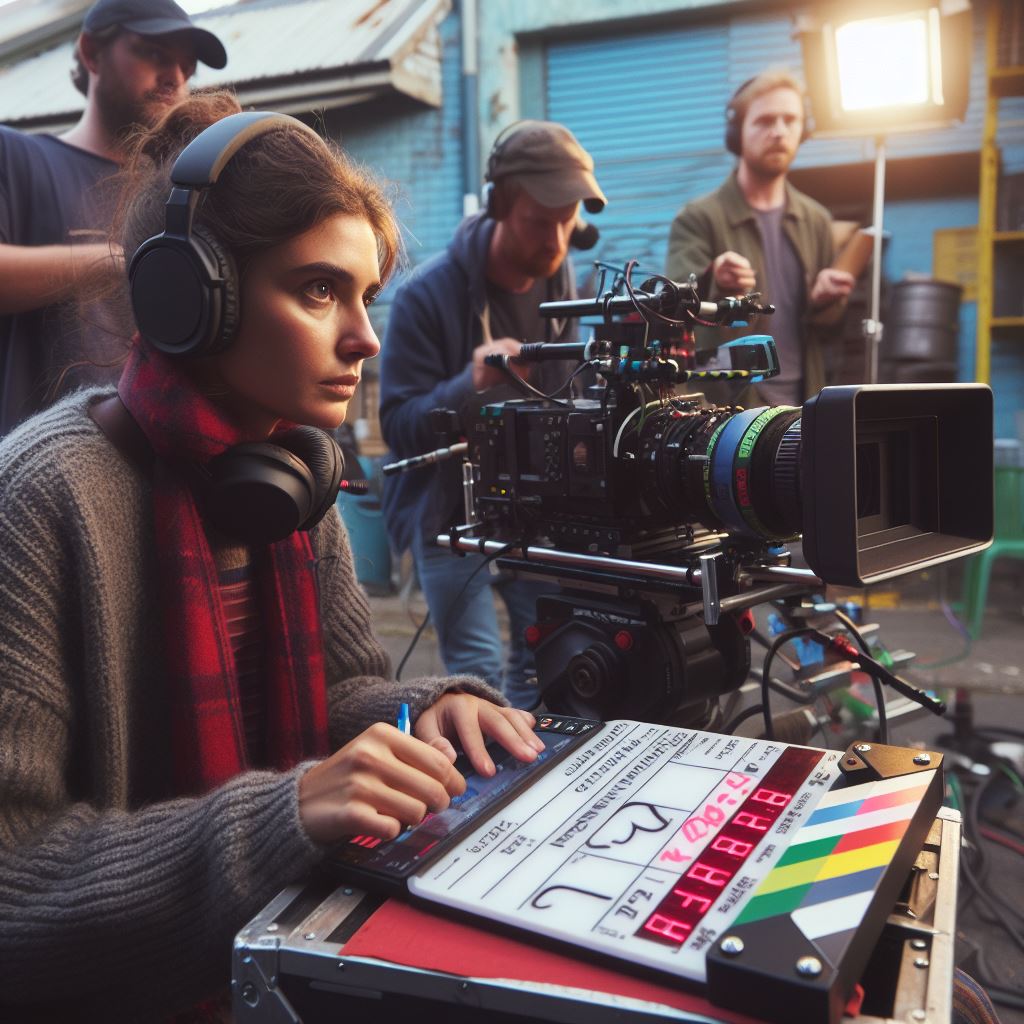Introduction
Australian theatre and film industries have played a significant role in the country’s cultural scene.
The purpose of this blog post is to compare and explore the differences between theatre acting and film acting in Australia.
Overview of Australian theatre and film industries
Both Australia’s theatre and film industries have developed a rich history, contributing to the country’s cultural landscape. While theatre encompasses live performances in front of an audience, film involves capturing and producing visual stories on screen.
Purpose of the blog post
The blog post aims to highlight the distinctions between theatre acting and film acting specifically within the Australian context. It will delve into various aspects such as performance techniques, audience engagement, and career opportunities in both fields.
Theatre acting in Australia involves rehearsing and performing on stage, requiring actors to project their voices and emotions to connect with a live audience. The collaborative nature of theatre encourages actors to develop their improvisation skills and build chemistry with fellow cast members.
Film acting, on the other hand, entails delivering nuanced performances in front of cameras. Actors are often required to repeat scenes multiple times, allowing for precise camera angles and capturing different emotions in each take.
The medium allows for close-ups, enabling actors to convey emotions subtly through their facial expressions.
Despite these differences, both theatre and film offer unique opportunities for Australian actors. Theatre provides a chance to hone their craft in a dynamic live setting, while film offers a wider reach and exposure through global distribution.
Basically, this blog post will explore the contrasting aspects of theatre acting and film acting in Australia, shedding light on the distinct techniques, audience experiences, and career prospects in each medium.
Understanding these differences can help aspiring actors make informed decisions about pursing their passion in either theatre or film.
Theatrical Acting in Australia
Description of the theatre scene in Australia
- Australia boasts a vibrant and diverse theatre scene.
- It encompasses a wide range of genres, from classical to contemporary.
- Sydney and Melbourne are known for their thriving theatre districts.
- There are numerous professional theatre companies, including Sydney Theatre Company and Melbourne Theatre Company.
- Smaller independent theatre companies also contribute to the richness of the scene.
- Theatre venues vary in size, from intimate black box spaces to grand proscenium arch theatres.
- Australian playwrights, actors, directors, and designers are internationally recognized for their talent.
Importance of theatre in Australian culture
- Theatre plays a crucial role in shaping Australian cultural identity.
- It provides a platform for expressing diverse perspectives and experiences.
- Australian theatre often addresses social and political issues, sparking important conversations.
- Stories are told through Indigenous, immigrant, and LGBTQ+ voices, reflecting the country’s multiculturalism.
- Theatre allows for exploration of history, heritage, and shared national narratives.
Training and education for theatre actors in Australia
- Australia offers a range of prestigious drama schools and universities for aspiring actors.
- NIDA (National Institute of Dramatic Art) is renowned for its comprehensive training programs.
- Other respected institutions include WAAPA (Western Australian Academy of Performing Arts) and VCA (Victorian College of the Arts).
- These institutions provide intensive courses in acting, voice, movement, and technical theatre.
- Students receive hands-on experience through performances and collaborations with industry professionals.
Opportunities and challenges in the Australian theatre industry
- Actors can find opportunities in various areas, including mainstage productions, independent theatre, and touring shows.
- Networking and building professional relationships are vital for success in the industry.
- However, competition for roles can be fierce, particularly in popular cities like Sydney and Melbourne.
- The lack of financial stability and job security is a challenge for many theatre actors.
- Funding cuts and limited government support also pose difficulties for the sustainability of the industry.
- Despite these challenges, passionate individuals continue to contribute to the growth and development of Australian theatre.
In review, theatrical acting in Australia offers a diverse and enriching experience within a vibrant cultural scene. The importance of theatre in Australian culture cannot be overstated, as it serves as a platform for self-expression, storytelling, and reflection on societal issues.
Training and education opportunities help aspiring actors hone their skills and gain practical experience. However, the industry also presents challenges, such as fierce competition and limited financial stability.
Nonetheless, talented individuals persevere, contributing to the resilience and growth of Australian theatre.
Film Acting in Australia
Overview of the Australian film industry
- Australian film industry has a rich history and has contributed significantly to the global cinema.
- It encompasses various genres and has produced many critically acclaimed and commercially successful films.
- The industry is known for its unique storytelling and diverse cultural representations.
- Australian film industry promotes creativity and originality, offering a platform for aspiring filmmakers and actors.
Growth and success of Australian films internationally
- Australian films have gained recognition and appreciation worldwide, receiving numerous awards and accolades.
- Internationally acclaimed films like “Mad Max,” “Crocodile Dundee,” and “The Piano” have put Australian cinema on the global map.
- Australia’s film industry has grown in terms of box office success and international distribution.
- Australian actors have also achieved global recognition, establishing themselves as talented and versatile performers.
Training and education for film actors in Australia
- Australia offers several prestigious acting schools and institutions that provide comprehensive training for film actors.
- Acting programs focus on developing skills like character analysis, improvisation, voice modulation, and on-screen performance.
- These programs emphasize practical training, allowing actors to gain hands-on experience through workshops and industry collaborations.
- Students also learn about the technical aspects of filmmaking and gain insights into the industry’s professional standards.
Opportunities and challenges in the Australian film industry
- The Australian film industry provides diverse opportunities for actors to showcase their talent in both local and international productions.
- With the rise of streaming platforms, there is an increasing demand for Australian content, creating more acting opportunities.
- However, the industry also faces challenges such as limited funding, strong competition, and the dominance of Hollywood productions.
- Despite these challenges, Australian film actors continue to make their mark by delivering exceptional performances and taking on diverse roles.
Read: Music Production: A Guide for Aussies
Key Differences between Theatre Acting and Film Acting
Performance style and techniques
- Theatre acting requires projecting emotions and actions to reach the back of the auditorium.
- Film acting focuses on subtlety and nuance to convey emotions on the close-up shots.
- Theatre actors rely on vocal projection and body language to engage the entire audience.
- Film actors utilize close-ups and camera angles to convey emotions through facial expressions and gestures.
Audience interaction and connection
- Theatre actors have direct interaction with the live audience, receiving immediate feedback and reactions.
- Film actors have no live audience interaction and rely on the director’s vision and editing to connect with the viewers.
- Theatre performers feed off the energy of the audience, creating a unique and engaging experience.
- Film actors must create a believable connection with the camera, as the audience is not physically present during filming.
Technical aspects and limitations
- Theatre acting requires actors to adapt to the physical limitations of the stage and set design.
- Film actors have the advantage of various camera angles, locations, and special effects to enhance their performances.
- Theatre actors must memorize the entire script and perform it from start to finish in one take.
- Film actors can film scenes out of sequence and rely on editing to piece together the final performance.
Rehearsal process and time commitment
- Theatre actors have longer rehearsal periods to perfect their performances and develop chemistry with the cast.
- Film actors often have limited rehearsal time and must quickly establish rapport with their co-stars.
- Theatre rehearsals involve blocking and choreography that actors must remember and execute consistently.
- Film rehearsals focus on camera blocking and technical aspects rather than full performances.
Career prospects and job opportunities
- Theatre acting provides more stage-based job opportunities, including plays, musicals, and improv shows.
- Film acting offers a wider range of job opportunities, including TV series, movies, commercials, and streaming platforms.
- Theatre actors can have a consistent income through long-running productions or touring shows.
- Film actors have the potential for higher pay and international recognition through successful movies.
In general, theatre acting and film acting differ in performance style, audience interaction, technical aspects, rehearsal process, and career prospects.
Both require unique skills and techniques, making them distinct but equally challenging forms of acting. Whether an actor chooses to perform on stage or in front of the camera, their passion and dedication to the craft will ultimately determine their success in the industry.
Read: Australian Music Awards: A Closer Look

Explore Further: Landscape Photography: Capturing Australia
Gain More Insights: Australian Authors’ Earnings: A Real Look
Gain More Insights: A Day in the Life of an Aussie Journalist
Actor’s Perspective: Pros and Cons
Interviews with theatre actors in Australia
- Theatre actors in Australia find immense advantages and enjoyment in live performances.
- They relish the connection with the audience and the immediate feedback they receive.
- Theatre allows actors to fully immerse themselves in a character and showcase their versatile skills.
- They appreciate the rehearsal process, which helps create a strong sense of camaraderie among the cast.
- However, theatre acting also comes with challenges and limitations that actors must navigate.
- One of the challenges is the need to deliver a consistent performance night after night.
- Theatre actors face the pressure of maintaining energy and intensity throughout the show.
- They must also rely on precise timing and coordination with fellow actors on stage.
- The limitations include limited opportunities for retakes and the inability to reach a broader audience.
- Theatre actors understand that their work will have a more temporary impact compared to filmed performances.
Interviews with film actors in Australia
- For film actors in Australia, there are distinct advantages and fulfillment in the world of cinema.
- Film acting provides actors with the opportunity to reach a vast and diverse audience.
- They enjoy the chance to work with advanced technology and explore various storytelling techniques.
- Film actors find fulfillment in creating characters that can be immortalized on the silver screen.
- However, the challenges and demands of film acting should not be overlooked.
- A major challenge is the requirement to adapt to different directors’ visions and shooting styles.
- Film actors must be prepared for long working hours and frequent takes to achieve perfection.
- They need to embody their character’s emotions convincingly, considering the close-up shots.
- Film acting demands versatility and the ability to adjust to the demands of different genres.
- Additionally, the constant exposure in the media can bring both acclaim and intense scrutiny.
Generally, both theatre and film actors in Australia have their own perspectives on the pros and cons of their respective fields. Theatre actors appreciate the immediate connection with the audience and the depth they can achieve in live performances.
On the other hand, film actors cherish the wide reach and the opportunity to create enduring characters through their work. However, both professions come with their own set of challenges and demands that actors need to navigate.
Despite these differences, actors in Australia are fortunate to have a thriving industry that offers them the chance to explore their craft in various ways.
Your Personalized Career Strategy
Unlock your potential with tailored career consulting. Get clear, actionable steps designed for your success. Start now!
Get StartedRead: Building a Music Career in Australia
Advice for Aspiring Actors in Australia
Factors to consider when choosing between theatre and film
- Identify personal preferences and strengths to determine which medium suits you best.
- Consider the nature of each medium, the style of acting required, and the audience engagement.
- Research the demand and opportunities available in both theatre and film industries.
- Reflect on the financial aspect and lifestyle implications of each medium.
Importance of training and versatility
- Invest in quality acting training to refine your skills and broaden your abilities.
- Being versatile allows you to adapt to different roles and increase your chances of success.
- Continuous learning and development in acting techniques and methods are crucial.
- Develop skills beyond acting, such as voice control, movement, and improvisation.
Exploring both mediums to enhance skills and opportunities
- Participate in community theater productions to gain experience and exposure.
- Join acting workshops and classes to practice and network with industry professionals.
- Seek opportunities to audition for both theatre and film projects to expand your horizons.
- Gain insights from actors who have worked in both mediums to learn from their experiences.
Making informed decisions based on personal goals and strengths
- Evaluate your long-term goals and assess which medium aligns better with them.
- Consider your strengths and weaknesses as they relate to theater and film acting.
- Consult with mentors or industry experts who can provide guidance and advice.
- Trust your instincts and make the decision that feels right for your career and personal growth.
Finding success as an actor in Australia requires careful decision-making and a proactive approach. Understanding the factors involved in choosing between theatre and film is crucial.
By considering personal preferences, the nature of each medium, and the available opportunities, aspiring actors can make informed choices.
Investing in acting training and cultivating versatility are essential for actors in Australia. Training hones acting skills, while versatility offers flexibility and increases chances of landing diverse roles.
Actors should constantly seek opportunities to learn and develop their abilities beyond acting alone. Voice control, movement, and improvisation skills are valuable assets for a successful acting career.
Exploring both theatre and film mediums can significantly enhance an actor’s skills and chances of success. Engaging in community theatre and joining workshops or classes provide valuable experience and networking opportunities.
Auditioning for roles in both mediums expands horizons and allows actors to receive valuable feedback. It’s also beneficial to gain insights from professionals who have worked in both theatre and film industries, as their experiences can offer valuable lessons and guidance.
Ultimately, aspiring actors in Australia must make decisions based on personal goals and strengths. Evaluating long-term aspirations, considering individual capabilities specific to each medium, and seeking guidance from mentors or industry experts are vital steps.
Trusting one’s instincts and making choices that resonate with personal growth and career objectives will lead to a fulfilling and successful acting career.
By carefully considering the factors, investing in training, exploring both mediums, and making informed decisions, aspiring actors can navigate the Australian acting scene with confidence and increase their chances of achieving their dreams.
Remember, success in acting requires dedication, persistence, and continuous self-improvement.
Read: The Evolution of Australian Music Genres
Discover More: Essential Gear for Aussie Photographers
Delve into the Subject: A Day in the Life of an Aussie Musician
Conclusion
In summary, this blog section has explored the differences between theatre acting and film in Australia.
Regardless of the medium, actors should be encouraged to pursue their passion and hone their skills.
Looking ahead, the Australian acting industry continues to offer exciting opportunities for growth and development.
In closing, the distinction between theatre acting and film in Australia highlights the diverse challenges and unique rewards each medium offers.
Theatre, with its live immediacy, demands strong vocal projection and stage presence.
Conversely, film acting thrives on subtlety, allowing nuanced expressions to unfold onscreen.
While both forms require exceptional talent, theatre connects actors intimately with live audiences, fostering immediate reactions.
In contrast, film provides the opportunity for detailed retakes, refining performances for a broader audience.
Australian actors navigate these distinct realms, showcasing versatility in their craft.
As we wrap up this exploration, it’s evident that both theatre and film contribute uniquely to Australia’s vibrant performing arts landscape, offering actors diverse avenues for artistic expression and leaving audiences enriched by the richness of these storytelling mediums.




